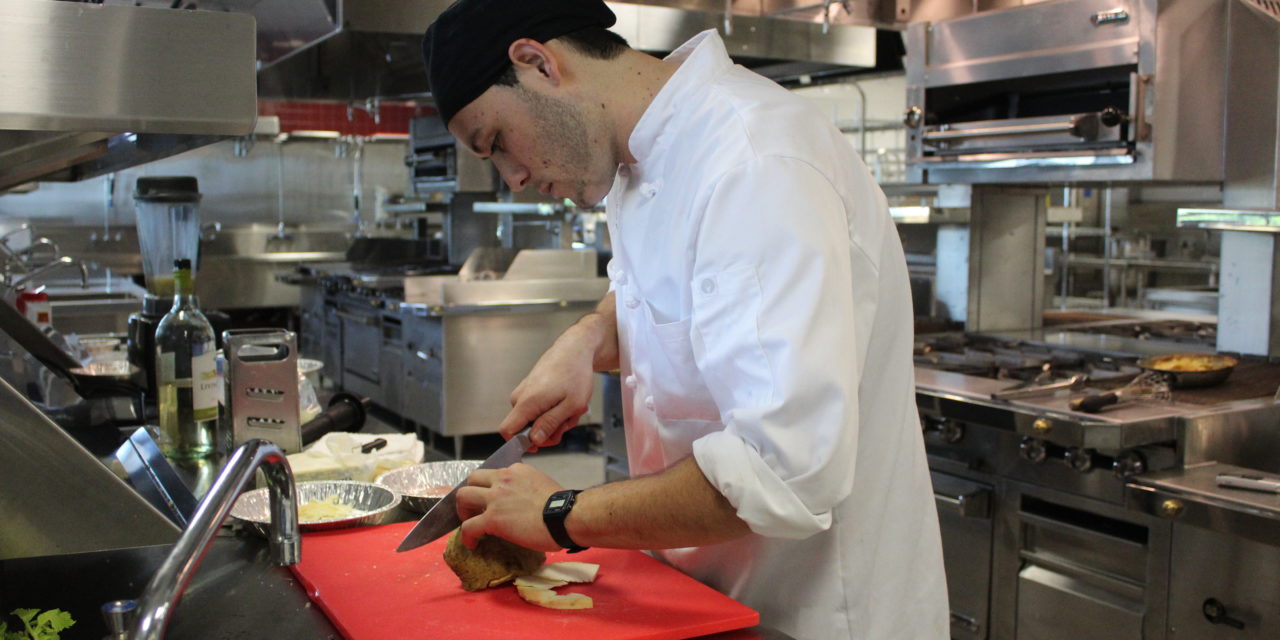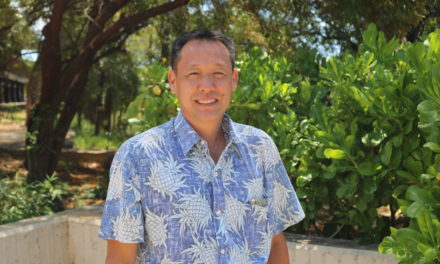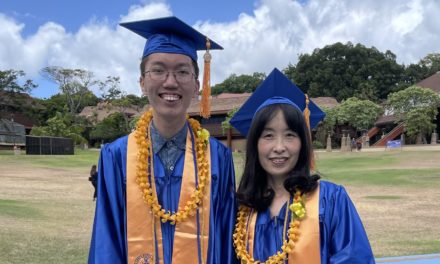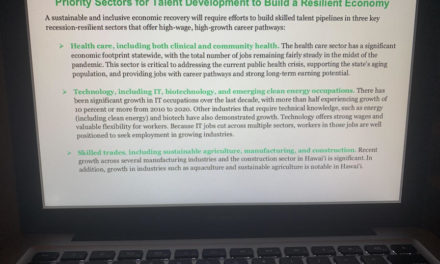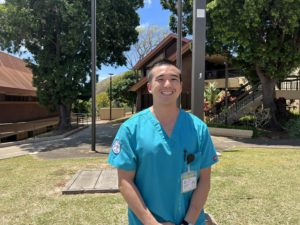By Lexus Yamashiro | Staff Writer
When first-year student Holden Nakamura was referred by Culinary Arts counselor Lori Maehara to volunteer in the kitchen of the Culinary Innovation Center (CIC), he immediately accepted the opportunity. Since beginning his volunteer work in late August, the 25-year-old Culinary Arts major has been executing already-tested recipes while also developing new ones.
“As soon as I started working with … foods that nobody’s made before or no one’s tried before, that’s when I knew it was something that I really want to pursue and learn more about,” said Nakamura.
The CIC, managed by research chef and food scientist Dr. Lauren Tamamoto, is a new program through the Culinary Arts program funded by the Trade Adjustment Assistance Community College and Career Training (TAACCCT) grant. Located at the Culinary Institute of the Pacific (CIP), KCC students (preferably Culinary Arts, Science, or Engineering majors) can get trained as volunteers to learn about food sustainability and how to produce safe, shelf-stable food products while promoting local agriculture.
“We do research on value-added products using seconds or … produce that might not be the perfect grade-A quality,” Tamamoto said. “[We’re] just trying to … get more people interested in food production, food manufacturing, so that they can either start their own companies or be workers in other companies.”
For Nakamura, developing new and creative recipes using local produce is what he has been able to practice while in the CIC. Born in Hawaiʻi but having grown up in California, Nakamura was unaware of what ʻulu (breadfruit) was until he stumbled upon one on the ground. After grasping an idea how to cook with it, he recognized that ʻulu can be used as a substitute for starchy foods such as potatoes.
With this in mind, Nakamura has been testing out different ʻulu recipes for the Culinary Arts program’s upcoming Healthy-licous Cooking Contest on October 22. He will be challenged to cook and present a healthy, yet simple dish for senior citizens at the Kāhala Nui nursing home using ʻulu as the main ingredient. Nakamura shared that using ʻulu for this competition gives his dishes a deeper flavor while containing 30 percent less starch content.
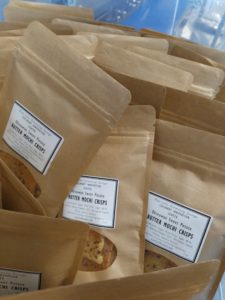
The CIC produces shelf-stable food products such as butter mochi crisps (above), okara granola, and more. (Photo courtesy of Lauren Tamamoto)
“Basically, it’s healthy for you and it tastes great,” Nakamura said. “The more you research and keep asking questions, you tend to learn that you can find these types of ingredients all over the island.”
Developing and experimenting with recipes in the CIC is what provides students with hands-on experience to create food products to sell in the ʻŌhia cafeteria and at the KCC Farmers’ Market. Currently, packages of butter mochi crisps are popular with customers but take several trials and lengthy processes to perfect. CIC volunteers often face challenges in thickness and calculating shelf life (the amount of time it is able to stay on the market without spoiling), but from this are able to see and understand the process that manufacturing companies commonly experience.
With these products being marketed to the community, pre-existing and new local food businesses have been reaching out for assistance on how to produce food products for consumers, conduct food product tests and how to create nutrition labels. The CIC will be able to expand on these services once Phase II of the CIP breaks ground by June 2018, where it will then locate to its new building. Tamamoto is hoping that a sensory lab can be built to control humidity, scents, lighting, and other factors that could affect tests that would be conducted on food products.
The CIC is hoping that its training and services offered for KCC students and the public will promote and help Hawaiʻi’s food industry grow. Tamamoto emphasizes that being creative to make new recipes while thinking about how its process can be made efficient is knowledge that students can take with them if they plan to pursue food production as a career.
“Just knowing that you actually created something that wasn’t there and people like it, that’s a great feeling,” Tamamoto said. “Hopefully we can produce more food in Hawaiʻi.”
For more information or for interested students who would like to volunteer at the Culinary Innovation Center (CIC), contact cicenter@hawaii.edu or (808) 734-9593.

